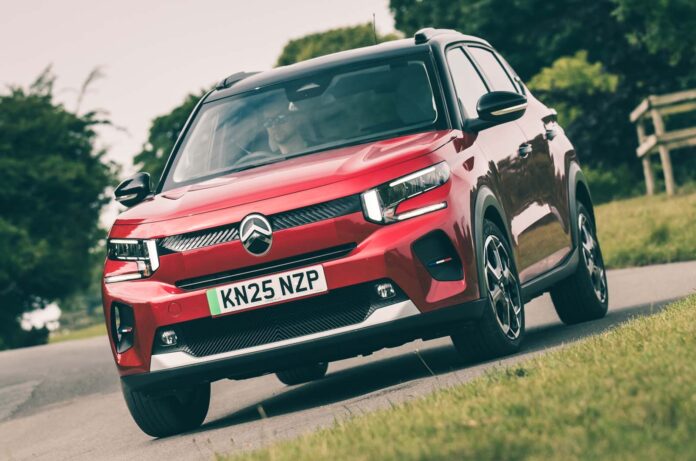All it shows is a rapidly dwindling range indicator, making longer trips harder to manage than they need to be. This was offset slightly by a decent claimed charging speed of 100kW, although I never saw more than 86kW.
Another feature notable by its absence was any form of brake energy regeneration control. A mild level of regeneration is there by default, but there’s no option for one-pedal driving.
It was missed when driving through town, and the only level of adjustability was the Cruise mode, which reduces high-speed regen to make for smoother driving on faster roads.
I also didn’t fully bond with the ë-C3’s almost oblong steering wheel. It was easy enough to turn in most cases but awkward in tighter corners, and generally I struggled to grip the darn thing.
The Renault 5 and Dolphin Surf are much more accommodating in this regard, although you could say the same for anything with a regular circular steering wheel.
Despite its shortcomings, though, the ë-C3 is a characterful little electric car with bags of personality. It was a regular talking point among friends, family and members of the public, many of whom admired its packaging and styling.
But our original reason for running this electric Citroën supermini was to find out if it was a match for the class-leading Renault 5. So is it? The 5 is more well rounded in terms of refinement and driver engagement, but the ë-C3 still scores highly in many areas.
It might not match its fellow French rival for all-round ability, but it certainly does for charm.
Citroën ë-C3 44kWh Max
Prices: List price new £23,795 List price now £23,040 Price as tested £24,490
Options: Elixir Red paint with black roof £695
Fuel economy and range: Claimed range 199 miles Battery 44.2/43.7kWh (total/usable) Test average 3.4mpkWh Test best 4.5mpkWh Test worst 2.8mpkWh Real-world range 149 miles
